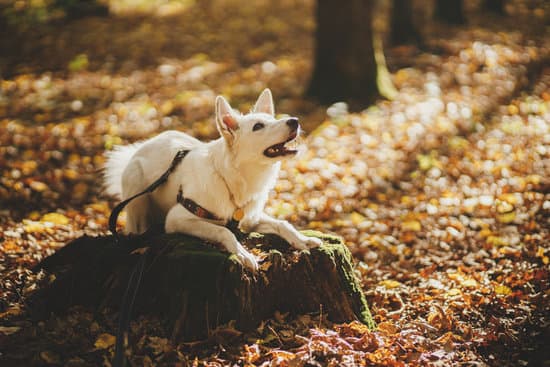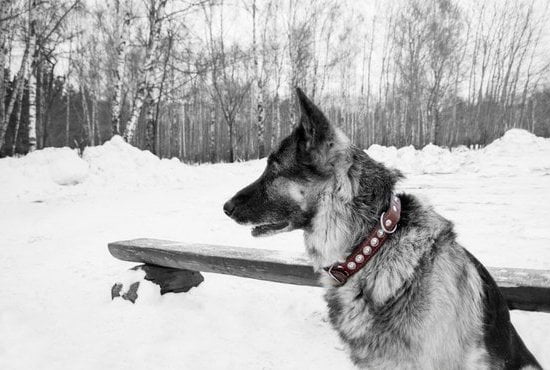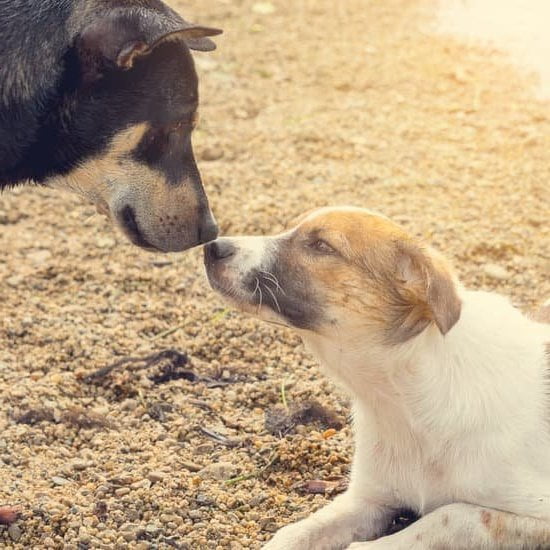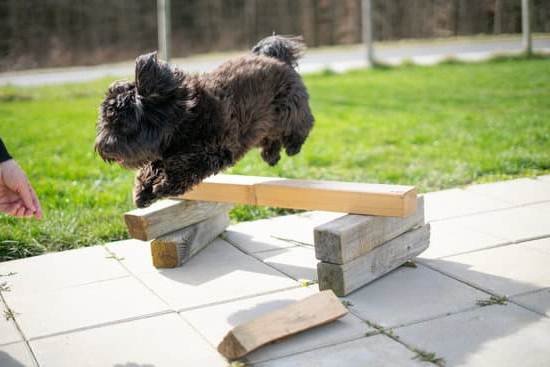Are you wondering how to train a dog as a service animal? Service animals play a crucial role in society, providing assistance and support to individuals with disabilities.
From guide dogs for the visually impaired to therapy dogs for emotional support, these specially trained canines enhance the quality of life for their handlers in numerous ways. In this article, we will delve into the training process for service dogs, exploring the essential traits and behaviors required, as well as the necessary skills and tasks they must learn to fulfill their role effectively.
Service animals come in various forms, each serving a specific purpose to aid individuals with disabilities. From physical assistance to emotional support, these animals play a vital role in their handlers’ daily lives. Understanding the importance of service animals and their diverse roles is essential when embarking on the journey of training a dog as a service animal. It is crucial to recognize the impact these devoted companions have on their handlers and the community as a whole.
When it comes to selecting and training a dog as a service animal, certain characteristics are fundamental for success. From temperament to intelligence, specific breeds are commonly preferred for their suitability as service animals. Additionally, these dogs must possess essential traits and behaviors that make them well-suited for their roles. Determining what makes a good service dog and why particular breeds are commonly used will be explored further in this section.
The Characteristics of a Good Service Dog
Training a dog to become a service animal is a rewarding yet demanding process. Not all dogs possess the temperament and qualities required to excel in this important role. When considering which dog to train as a service animal, it’s crucial to look for specific characteristics that are essential for success. Here are some of the key traits and behaviors that make a good service dog:
1. Temperament: A good service dog should exhibit a calm, confident, and even-tempered disposition. This is especially important when the dog needs to remain focused and composed in various environments and situations.
2. Intelligence: Service dogs need to be highly trainable and able to learn complex tasks and commands quickly. They should also be able to problem-solve and adapt to new situations effectively.
3. Sociability: Service dogs must be comfortable with interacting with people, including strangers, and other animals without being aggressive or fearful. Their ability to remain friendly, yet attentive, is crucial for their role.
Training a potential service dog begins by identifying these essential characteristics within a particular breed or individual dog and then fostering them through proper training techniques. Positive reinforcement, consistency, socialization, and exposure to different environments are vital components in developing these traits in a dog destined for service work how to train dog as service animal.
By understanding what makes a great service dog, individuals can make informed decisions when selecting and training their future canine companion for this noble role.
Basic Obedience Training
Basic Commands and Behaviors
Training a dog to become a successful service animal begins with mastering the basics of obedience. This includes commands such as sit, stay, come, heel, and down. Additionally, behaviors like walking on a leash without pulling, remaining calm in various environments, and responding to their handler’s signals are crucial for a service dog. Establishing solid obedience skills is the foundation for all other training that the dog will need to perform its duties effectively.
Effective Training Techniques
When it comes to teaching basic obedience to a service dog, positive reinforcement is key. Using rewards such as treats, praise, or toys can motivate the dog to learn and obey commands. Consistency and patience are also essential in training a service animal because they will need time to understand and master each command. It’s important for handlers to work with professional trainers who understand the unique needs of service animals and can provide guidance on effective training techniques.
The Role of Socialization
Socialization is an important aspect of basic obedience training for service dogs. The process involves exposing the dog to various people, environments, sounds, and experiences in a controlled manner so that they can learn to remain calm and focused in different situations. Properly socialized dogs are better prepared to handle the demands of public access training and interact appropriately with individuals they may encounter while working as a service animal.
Advanced Task Training
When training a dog to become a service animal, it is crucial to focus on advanced task training. This phase of the training process involves teaching the dog specialized skills and tasks that are essential for assisting their handler in specific situations. Some of these tasks may include retrieving items, opening doors, or alerting to medical conditions.
One important aspect of advanced task training is understanding the individual needs and requirements of the handler. Different service animals may need to learn different tasks based on the unique challenges faced by their handlers. For example, a diabetic alert dog will need to be trained to recognize and respond to changes in blood sugar levels, while a mobility assistance dog will need to be trained to provide physical support and aid in navigating various environments.
To properly train a dog in these advanced tasks, it’s essential for handlers to work closely with experienced trainers who have expertise in service animal training. Oftentimes, professional trainers can provide step-by-step instructions and guidance on how to effectively train dogs for specific tasks. Additionally, they can offer valuable insights into best practices for reinforcement and troubleshooting any challenges that may arise during the training process.
Overall, advanced task training plays a critical role in shaping a successful service animal. By focusing on the specific needs of the handler and providing specialized training tailored to those requirements, dogs can develop the necessary skills to fulfill their roles as reliable service animals.
| Aspect | Importance |
|---|---|
| Focusing on individual needs | Crucial for tailoring training |
| Working with professional trainers | Provides expertise and guidance |
| Specialized training | Evolves dogs into reliable service animals |
Public Access Training
When it comes to training a dog as a service animal, one of the most crucial aspects is public access training. This type of training is essential for ensuring that the service dog can navigate public spaces and events while remaining focused on their handler’s needs. Here are some important considerations for public access training:
- Desensitization to distractions: Service dogs need to be able to remain focused on their handler despite various distractions in public settings. This can include loud noises, crowded areas, and other animals. Desensitization techniques involve gradually exposing the dog to these distractions in a controlled environment and rewarding them for maintaining focus.
- Obedience in different environments: It’s important for service dogs to be obedient and well-behaved in a variety of settings, including restaurants, stores, and other public places. This requires consistent reinforcement of basic obedience commands such as sit, stay, and heel in different environments.
- Interaction with other pets: Service dogs will inevitably encounter other pets in public spaces, so it’s important for them to remain calm and well-behaved when around other animals. Controlled interactions with friendly pets can help service dogs learn appropriate social behavior.
Training a dog as a service animal requires patience, consistency, and dedication. Public access training is a critical component of this process since it ensures that the service dog can effectively assist their handler in various public settings while maintaining good behavior and focus. By following effective training techniques and seeking professional guidance if needed, handlers can ensure that their service dog is well-prepared for any situation they may encounter.
Emotional Support and Bonding
Establishing a strong emotional bond between the service dog and their handler starts from the earliest stages of training. Positive reinforcement, patience, and consistent interaction help to create a deep connection based on mutual understanding. This bond not only enhances the effectiveness of the service dog in performing their tasks but also provides comfort and emotional support to their handler.
In addition to practical training, it is important to incorporate activities that promote emotional bonding during the training process. Spending quality time together, engaging in play or relaxation, and participating in joint activities can strengthen the emotional connection between the service dog and their handler. Ultimately, this bond forms the basis for a successful partnership in providing assistance and support in various situations.
| Aspect | Description |
|---|---|
| Relationship building | Quality time spent together helps build a strong relationship based on mutual trust. |
| Emotional recognition | Service dogs need to learn how to read their handler’s emotions to provide appropriate support. |
| Mutual understanding | The emotional bond creates an environment of empathy and cooperation between the dog and their handler. |
Legal Rights and Responsibilities
Training a dog to become a service animal involves more than just teaching them specific tasks and behaviors. It also involves understanding the legal rights and responsibilities that come with having a service animal. From public access to housing accommodations, it is important for both the handler and the service animal to be aware of their rights and responsibilities in various settings.
Public Access Rights
Service animals are granted certain privileges when it comes to accessing public spaces, such as restaurants, grocery stores, and public transportation. It is essential for both the handler and the service dog to understand the laws regarding public access for service animals. This includes knowing when businesses or establishments cannot deny access to a service animal, regardless of local regulations.
Housing Accommodations
Under housing laws such as the Fair Housing Act, individuals with disabilities are allowed reasonable accommodation when it comes to their service animals. This means that landlords or property managers cannot discriminate against someone with a disability who requires a service animal. Handlers should be familiar with their rights regarding housing accommodations for their service animals.
Etiquette and Responsibilities
While service animals are granted special privileges in public spaces, handlers also have certain responsibilities when it comes to their service animals’ behavior. It is crucial for handlers to ensure that their service dogs are well-behaved and do not disturb others in public settings. Additionally, handlers should be knowledgeable about the legal repercussions if their service animal misbehaves in any way.
Understanding these legal rights and responsibilities is crucial for anyone considering training a dog as a service animal. By being informed about these aspects, handlers can effectively navigate various situations while ensuring that they uphold the laws that protect both themselves and their service animals.
Resources and Support
In conclusion, training a dog as a service animal requires dedication, patience, and a deep understanding of the specific skills and behaviors needed for the role. From basic obedience training to advanced task learning, service animals undergo thorough instruction to become valuable companions for individuals with disabilities. Understanding the legal rights and responsibilities associated with having a service dog is also crucial in ensuring their well-being and effectiveness in public spaces.
One of the most important aspects of training a dog as a service animal is the emotional support and bonding between the canine and their handler. This connection forms the foundation for successful working relationships, as trust and communication are essential in carrying out tasks effectively. The process of training not only provides practical skills but also strengthens the emotional bond between the service dog and their handler.
While this article provides valuable insights into how to train a dog as a service animal, it’s essential to recognize that professional resources and support are available for individuals interested in pursuing this path. Seeking guidance from experienced trainers or organizations can provide invaluable assistance in navigating the complexities of service animal training.
Furthermore, accessing recommended books, websites, and support groups can offer ongoing education and encouragement throughout the training process. By taking advantage of these resources, individuals can ensure that their service dog receives comprehensive training to fulfill their important role in enhancing quality of life for those in need.
Frequently Asked Questions
Can You Train Your Dog to Be a Service Dog Yourself?
Training your own service dog can be challenging and time-consuming, requiring a deep understanding of the specific tasks and behaviors needed for the individual’s disability. It is often recommended to seek the help of a professional trainer.
What Age Is Too Late to Train a Service Dog?
While there is no strict age limit for training a service dog, starting at an early age is generally beneficial due to the flexibility and learning capabilities of younger dogs. However, older dogs can still be trained, but it may take more time and effort.
What Are the Three Questions You Can Ask About a Service Dog?
When encountering a service dog team, it’s important to remember not to distract or interact with the dog unless given permission by the handler. One can ask what tasks the dog has been trained to perform, if it is a service animal required because of a disability, and what kind of training or certification the dog has received.

Welcome to the blog! I am a professional dog trainer and have been working with dogs for many years. In this blog, I will be discussing various topics related to dog training, including tips, tricks, and advice. I hope you find this information helpful and informative. Thanks for reading!





